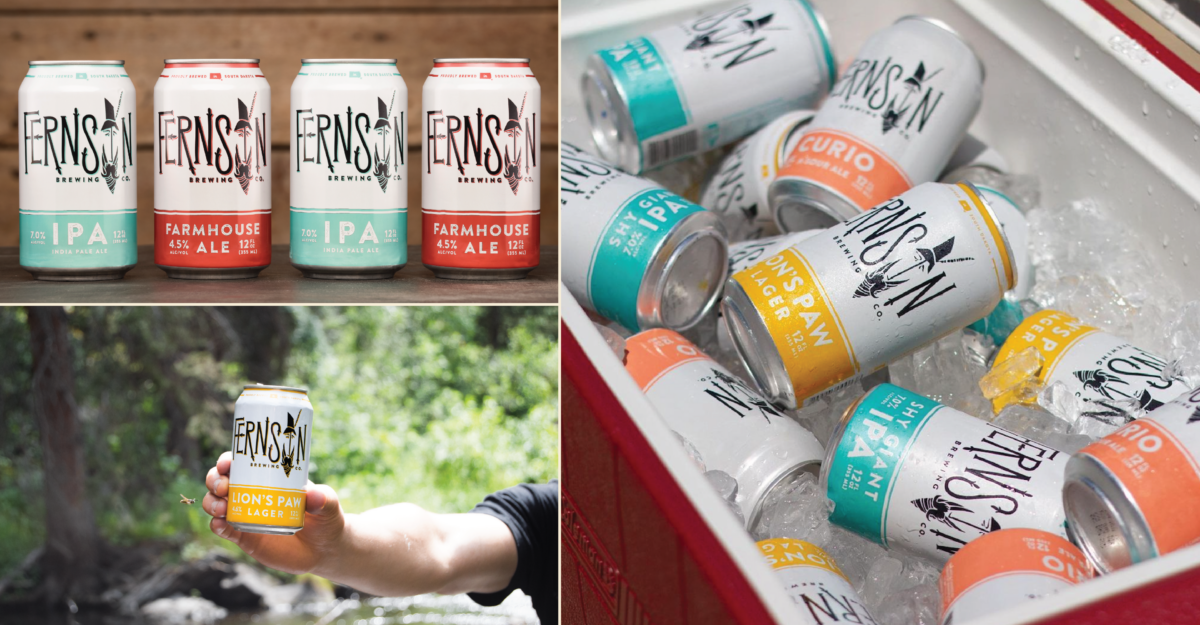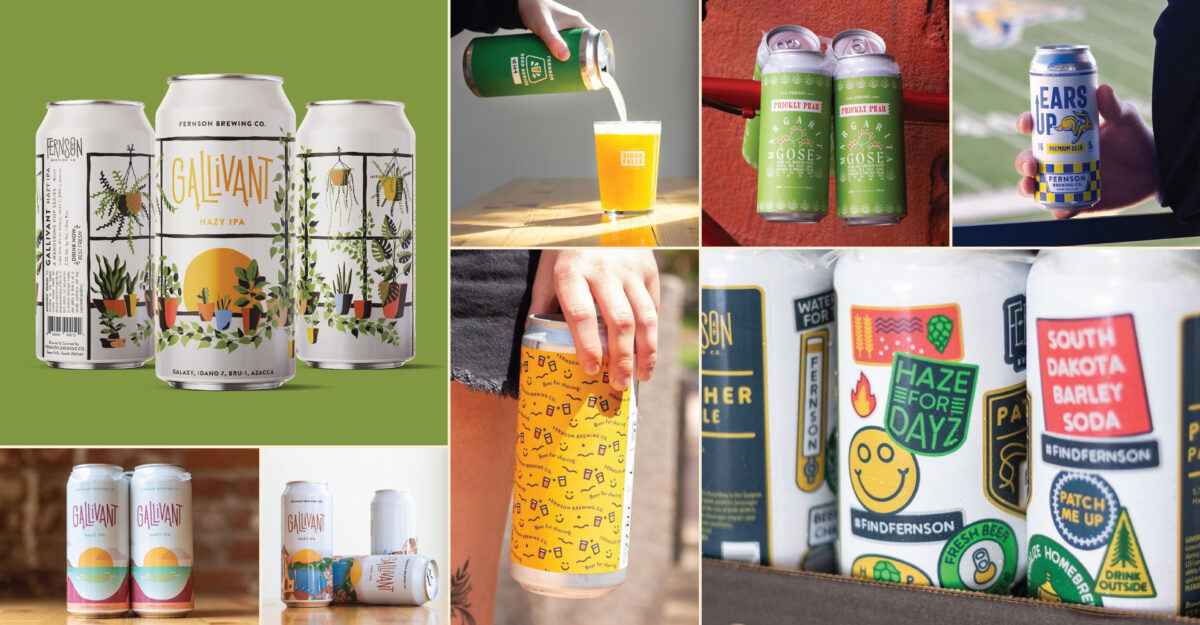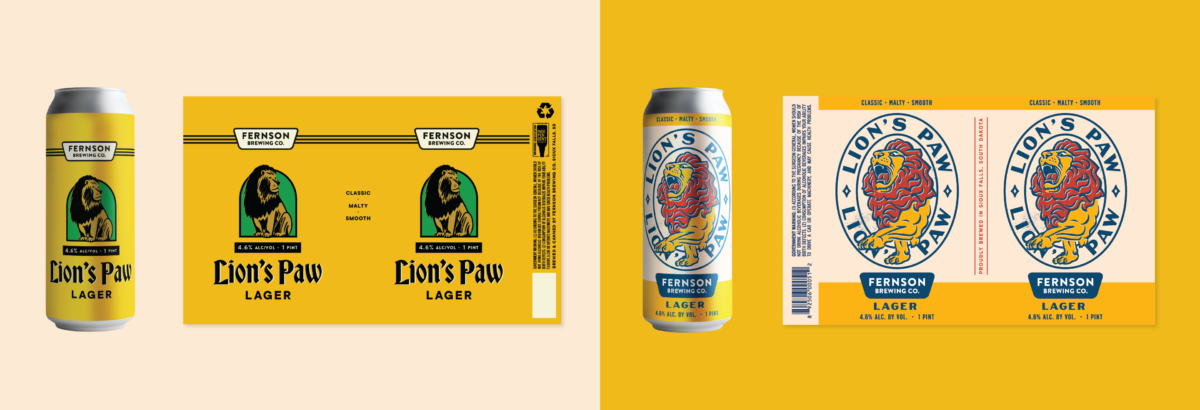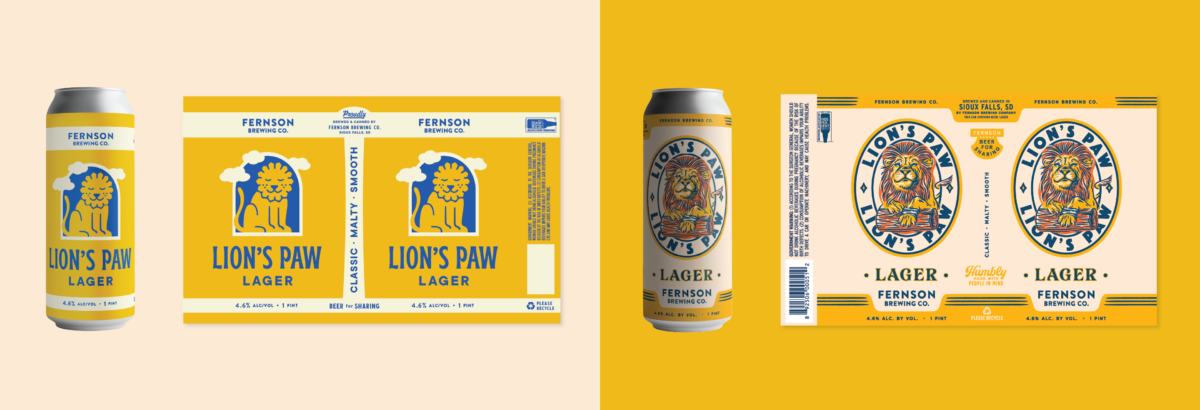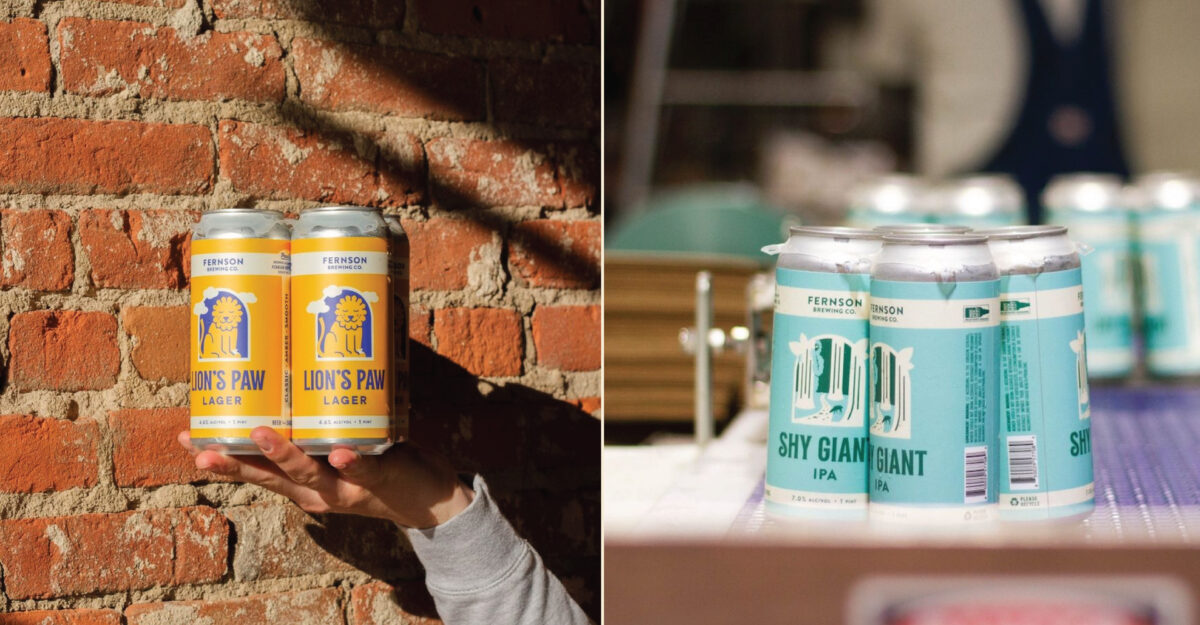We shared two directions initially, one of which (above, right) featured a beautiful custom lion illustration.
We were really excited about this direction, and the art itself. It’s beautiful, it would translate well to a painted can, it lends itself to merchandising and POS opportunities, and on and on.
But as excited as we were, it didn’t quite land with the Fernson team.
(A foghorn bays mournfully in the distance. Another slice of my beard turns ashen.)
They liked the illustration, but felt like it departed too heavily from their established aesthetic (i.e. all those great in-house cans and releases I mentioned earlier).
Another consideration, though not as immediately pressing as the previous one, is that this illustration style is fairly complex. This means you have to have a specific set of illustration skills in order to create follow-on labels.
This is an important parameter that we end up discussing frequently in our work.
We have to balance creating something beautiful and compelling that stands out on shelf, but that, in an ideal world, will also be able to be replicated by your in-house team.
While CODO (and any designer worth their salt) wants to design every single label your brewery puts out, this often isn’t financially prudent. It doesn’t take many label design projects before you start to seriously consider hiring an in-house creative.
Anyway, I’ll fast forward here through revisions and share round 2 concepts.

